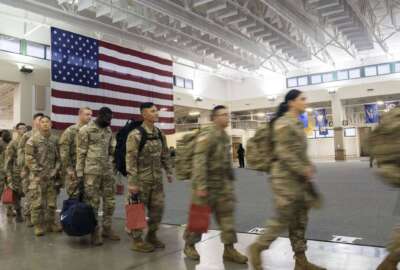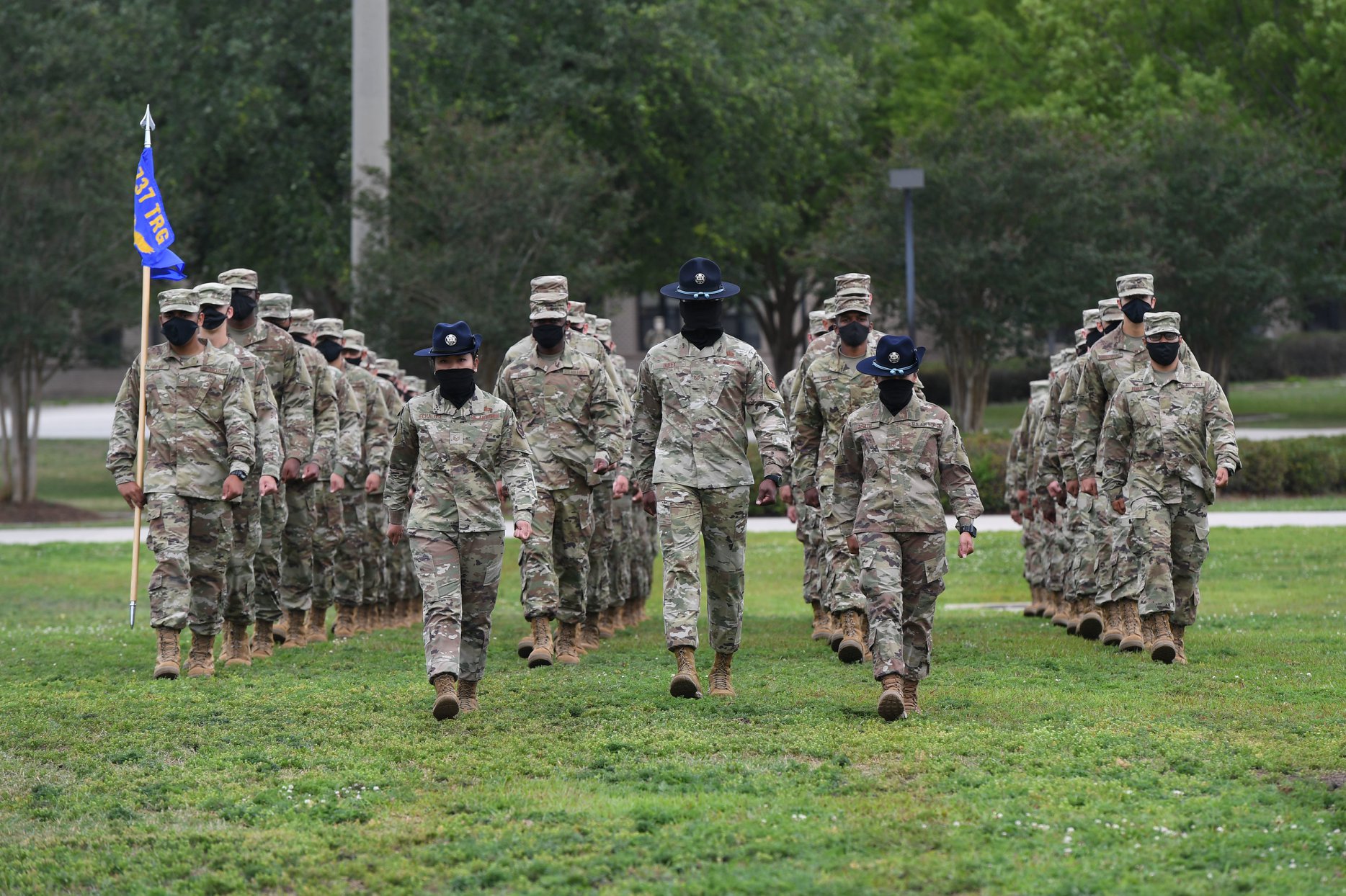Army recruiting challenges mean force could shrink by tens of thousands more soldiers
Each service has faced recruiting challenges in recent months, but the Army's is by far the largest.
In the span of just a couple of years, the Army faces the prospect of seeing its active duty force shrink by as much as 8.5%. It’s not for lack of funding, budgets have been robust. It’s mainly because it’s gotten a heck of a lot harder in recent months to entice the tens of thousands of new recruits the Army personnel system demands each year, and officials don’t see the problem getting better anytime soon.
The service started its planning for fiscal year 2023 knowing it was going to have a big recruiting challenge on its hands. But the task turned out to be even more daunting than officials first believed, and the service’s active duty end strength will likely decline by tens of thousands of additional soldiers next year.
In its 2023 budget submission, the Army cut its proposed end strength target from 485,000 to 473,000, citing difficulties in attracting high-quality talent. But its number-two ranking officer told Congress this week even that number isn’t achievable. The new forecast is between 445,000 and 455,000.
“We’re going to mission ourselves for 455,000 if we can achieve it — the question is whether or not we can achieve it,” Gen. Joseph Martin, the Army’s vice chief of staff told the House Armed Services Committee. “What we think is going on right now is we’ve got unprecedented challenges with both a post COVID-19 environment and labor market, but also competition with private companies that have changed their incentives over time. We’ve also seen a decreasing propensity and requisite qualifications to serve.”
Since 2017, the percentage of American 17- to 24-year-olds who meet the military’s physical and academic qualifications to join without a waiver has fallen from 29% to 23%. And taking into account the number of young people who are “propensed” to serve, the real recruiting pool is even smaller than that, Martin said.
But the small recruiting pool isn’t a particularly new problem, and the Army’s latest challenges in maintaining end strength have crept up rather suddenly. The service managed to keep its active duty strength in line with its Congressionally-authorized levels through the worst of the COVID pandemic. It ended fiscal year 2021 with 486,000 soldiers, just slightly higher than that year’s goals. It beat its retention goals that year, too, by a little more than 1,800 solders.
However, according to figures from DoD’s Defense Manpower Data Center, the size of the active duty force started shrinking almost immediately after that, and has declined in every month of fiscal year 2022. By the end of May 2022 — the most recent figures available — the active force had already declined by more than 20,000 soldiers, to just under 465,000.
And so far in fiscal year 2022, with just a few months to go, the Army has only met 50% of its goal to recruit 60,000 new soldiers.
Rep. Jackie Speier (D-Calif.), the chairwoman of the House military personnel subcommittee, said the Army’s end strength challenges, combined with the additional ones it’s forecasting next year, likely warrant a special hearing to examine the issue.
“It’s pretty serious,” she said. “And if we need to make some changes to be able to attract more talent, than we need to look more carefully at that.”
Martin acknowledged that the prospective end strength declines are large enough that it’s possible the Army will have to make cuts in force structure — deactivating entire units and reallocating their soldiers elsewhere.
“We don’t need to do that immediately, but if we don’t arrest the decline that we’re seeing right now, that could be a possibility in the future,” he said “In the near term, the way we’re going to manage any shortfalls is the way we’ve done it in the past, where we prioritize formations that have missions or are in preparation for missions — those missions will be prioritized to be manned.”
The military’s COVID-19 mandate is one factor that could force further declines in the coming months. Across the active Army, the National Guard and the Army Reserve, Martin said roughly 20,000 soldiers currently face discharge for refusing the order to get vaccinated.
Vaccination refusal won’t be a huge factor for the active duty force. In that group, 96% of soldiers are already fully-vaccinated; more than 3,000 who aren’t have been granted temporary or permanent exemptions. Only 1,444 active duty soldiers have flat-out refused the vaccine, and 1,336 of those have already been separated from military service, according to the latest figures the Army published last Friday.
But the story is different in the reserve components. More than 11,000 Army National Guardsmen and nearly 7,000 Army Reserve soldiers have refused the vaccine. Those components’ vaccination rates stood at 88% and 90%, respectively, as of Friday.
None of those soldiers have been involuntarily separated yet. The deadline for the reserve components to get vaccinated was June 30, and Army Secretary Christine Wormuth is still determining whether guardsmen who missed that deadline will be discharged.
“She has not made a decision yet,” Martin said. She’s got to take a lot of things into consideration as we move towards that decision, but each and every day, we’re making progress in terms of more soldiers choosing to vaccinate, or their exemptions getting approved. We also need to see the impact when the new Novavax vaccination comes into play and how many people are going to change their minds as a result of that being available as an option. We will have to manage our force, but we’re talking about the future and we haven’t made that decision yet.”
The other military services have seen declines in active duty end strength over the past year to varying degrees, but none of them are as large as the Army’s gap, particularly given that the personnel-intensive service needs to recruit many more people to begin with than any of its sister services.
The latest DoD statistics — again, as of the end of May — show the Army is currently 4.3% below Congressionally-authorized levels for 2022. The Navy, meanwhile, is about 1.5% below its authorized end strength of sailors. The Air Force and Space Force, counted together for statistical purposes, are short by about 1.6%, and the Marine Corps is short by 2.1%.
Copyright © 2025 Federal News Network. All rights reserved. This website is not intended for users located within the European Economic Area.
Jared Serbu is deputy editor of Federal News Network and reports on the Defense Department’s contracting, legislative, workforce and IT issues.
Follow @jserbuWFED






